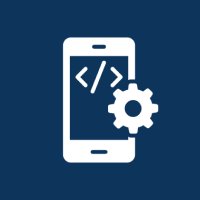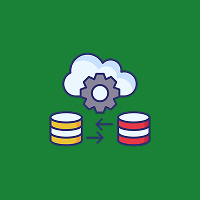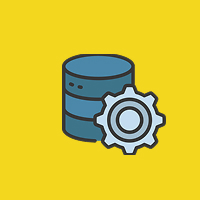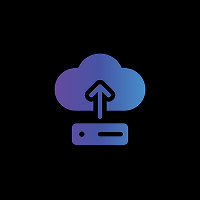Networking is the backbone of any contemporary iOS app. If your app is data-driven, depends on real-time updates, or utilizes third-party APIs, networking properly makes a difference. Alamofire, a popular Swift framework for HTTP networking, provides functionality that can help your app run better, scale better, and be easier to maintain.
In this presentation, we will discuss best practices at a professional level with Alamofire that will allow you to have a solid, secure, and future-proof networking layer for your iOS applications.
Why Developers Prefer Alamofire
Alamofire encapsulates the lower-level URLSession complexity and presents it with a good, developer-friendly API. Why is it an iOS networking staple?
- Simplified HTTP verbs: Quickly execute RESTful actions such as GET, POST, PUT, and DELETE with little configuration.
- JSON support native: Serialize and deserialize JSON with ease without boilerplate.
- Support for authentication: Token-based auth, OAuth, and custom headers are supported out of the box.
- File uploads/downloads: Upload images, videos, or documents with progress feedback.
- Strong error handling: Handle timeouts, server errors, and retry strategies with little custom code.
In short, it saves time, reduces bugs, and provides flexibility when handling everything from simple APIs to complex, multi-step transactions.
Centralizing API Requests
Proper separation of concerns is one of the largest programming mistakes and has been magnified by the rise of programming-in-the-large. Alamofire enables clean separation of concerns by promoting the use of a centralized network manager.
Advantages of a central request handler are:
- Single point of configuration: Base URLs, headers, and timeouts in one location.
- Readability: Business logic remains business-focused; network logic remains modular.
- Maintenance: API structure changes require changes in one location.
- Consistent error handling: Have default logic for retries, error notifications, or fallback behavior.
This is critical in dealing with large codebases and collaborative work.
Handling Authentication
APIs needing secure access usually employ bearer tokens, session cookies, or refresh tokens. It is inefficient and insecure to manually plug these into each request. Alamofire provides interceptors and adapters to do this programmatically.
Advanced developers typically use
Token refresh logic: Suspend and reissue requests at token expiration time and get a new token automatically.
Multi-user session management: Manage when users change accounts without causing the app to crash.
Already supported in REST and OAuth
Role-based headers or scopes: Dynamically alter headers or endpoints depending on the permissions or subscription level of the user.
These methods enhance user experience and minimize the amount of failed requests due to credentials that have timed out.
Making Retries and Failures Invincible
There is no perfect network—timeout, server crash, and cryptic failures will happen. Alamofire enables you to be able to do smart retry policy so that you do not unnecessarily make the application crash or infuriate users.
More advanced retry mechanisms are:
- Exponential backoff: Increase delay between retries incrementally so the server isn’t overhit.
- Selective retries: Retry some particular status codes such as 500, 502, or 504.
- Automatic fallback: If some particular endpoint fails, fallback to cached data or some other flow.
- The goal is resilience: to make your app resilient enough to withstand short-term disruptions without affecting the end-user.
Uploading Files with Progress Tracking
For file-uploading applications with high media usage, real-time feedback while uploading files is essential. Uploading photos in a social app or documents in a productivity app, progress tracking:
- Improves UX: Users get to know that something is happening and are less likely to abandon the process.
- Supports canceling: Implement canceling large uploads when necessary.
- Enables chunking: Break large files and upload in chunks for higher success rates and bandwidth conservation.
Developers may also log analytics on a failed upload or monitor file sizes for storage caps.
Tracking Network Reachability
An expert-level app knows how to behave when a user becomes offline. Alamofire offers in-house resources for dealing with changes in network status, which enables you to
- Alert the user through banners or toasts upon losing connection.
- Resume syncing or downloading automatically once connected again.
- Abort data-intensive operations (such as uploads or downloads) on low-bandwidth situations.
- Log connection drops for better diagnostic support tickets.
This makes the application more reliable and trustworthy—particularly in regions with poor internet connectivity.
Debugging and Logging Requests
Debugging is a matter of routine at scale. Alamofire accommodates custom logging in development and production environments.
Practices include:
- Verbose development request/response logs.
- Minimal production sanitized logs.
- Error tagging: Include custom tags on failed requests so they are easier to track in crash reports.
- Session tracking: Log each user’s request sequence to better understand app usage and issues.
For added convenience, integrate Alamofire with tools such as Charles Proxy, Postman monitors, or custom dashboards.
Alamofire Best Practices
To reap the maximum benefit of Alamofire, follow these best practices suggested by experts:
- Abstract your endpoints: Don’t use stringly-typed URL paths, use enums or constants instead.
- Split layers: Keep networking code separate from views and view models.
- Use dependency injection: Make your networking layer testable and mock-swappable.
- Validate all responses: Don’t have silent failures by verifying response types, status codes, and data validity.
- Secure sensitive data: Put API keys, tokens, and user credentials into the Keychain, not code or UserDefaults.
Alamofire is not just a network wrapper—it’s an end-to-end, full-featured framework that allows you to do modern, elegant, and robust iOS networking. With its cutting-edge features, you can design scalable network architectures, develop seamless user experiences, and condition your app to thrive in unpredictable network conditions.
By using these masterful techniques, you’re not just coding—you’re architecting for performance, security, and long-term success.
Contact Us Today













 Database Development
Database Development












































